How you can travel to Antarctica on an epic, life-changing voyage
Visiting the coldest, windiest and most remote place on Earth has never been as effortless as it is now. On a sleek expedition ship, chartered by a leading tour operator, even the icy terrain of Antarctica can be tamed.
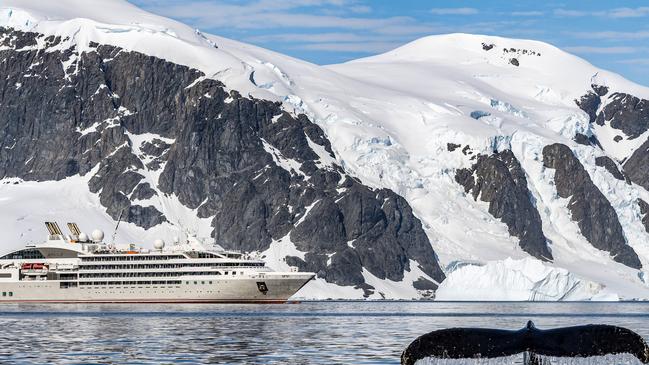
When Apsley Cherry-Garrard wrote his great book about Antarctica, as a member of Robert Falcon Scott’s ultimately ill-fated expedition, he struggled at first to find a title. His working title had been “Never Again: Scott, Some Penguins and the Pole”. Not a bad effort, but it didn’t feel quite right. Then, just before publication, it came to him. He called his book The Worst Journey in the World. But don’t be fooled by the title. Cherry-Garrard loved Antarctica. The White Continent haunted him for the rest of life. That this place – so completely alien, so difficult, so impossible for human habitation – is so compelling to all who have been there is just one of its many mysteries. For better or for worse, Antarctica remains one of Earth’s last great journeys.
I was sailing to Antarctica from Ushuaia at the southern tip of Argentina aboard Le Lyrial, part of the luxury Ponant fleet of cruise ships. I had hoped to say goodbye to our world, the world of people and plants, with trees bent in the wind, lights along the shoreline, cars moving on a dark road, lighthouses winking in the darkness. I wanted to wave to Cape Horn, once the end of the known world. But I was distracted by dinner, the roast lamb and the wonderful bottle of claret the sommelier had recommended. So that when I came out on deck, South America was gone – no more lights, no more coastlines, no sign of land, just the black ocean, a sharp wind, a wilderness of stars.
On a map, the long tapering tail of South America and the extended finger – ET-like – of the Antarctic Peninsula seem to reach towards one another. It looks an easy passage. But the southern oceans are notorious, and the Drake Passage – it is usually two days of unpredictable seas – is one of the world’s most difficult straits. We had the usual tempests, waves rolling over the bow, spray lashing the windows. It seemed the fitting prelude to a continent of such startling extremities.
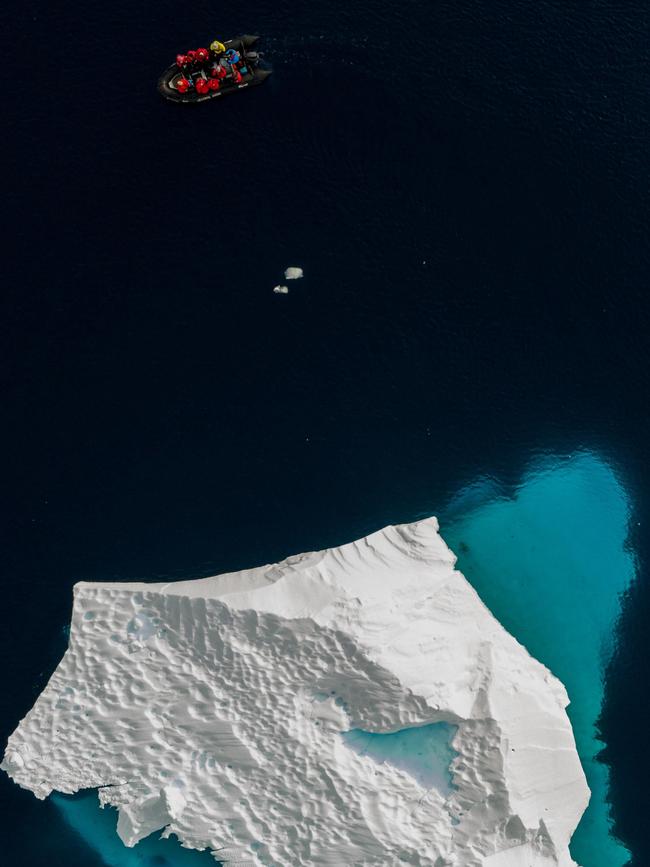
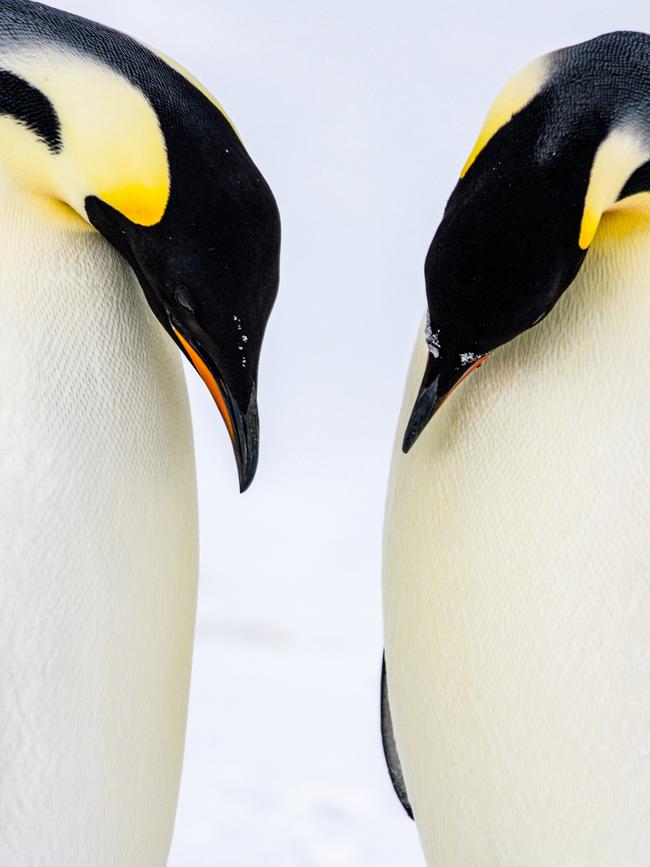
-
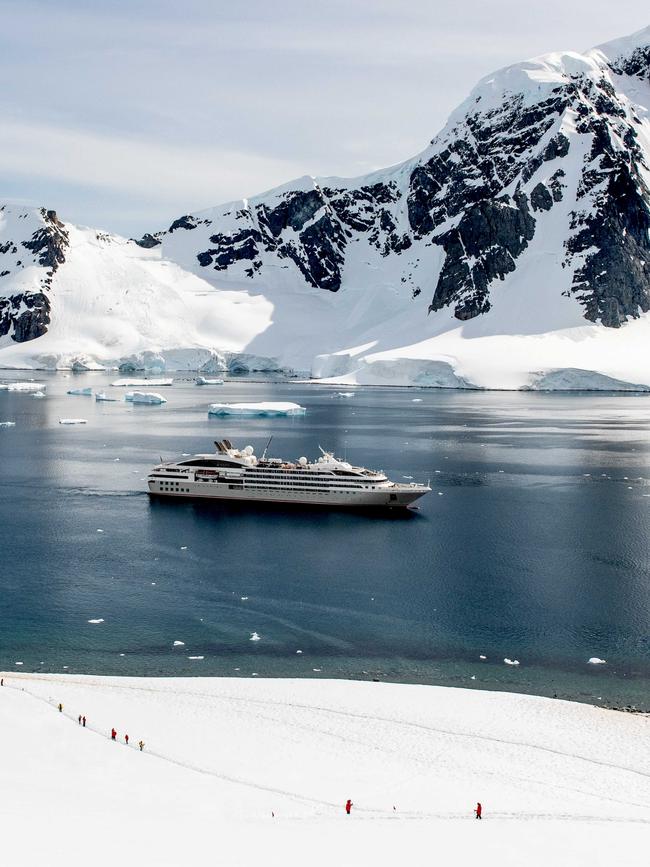
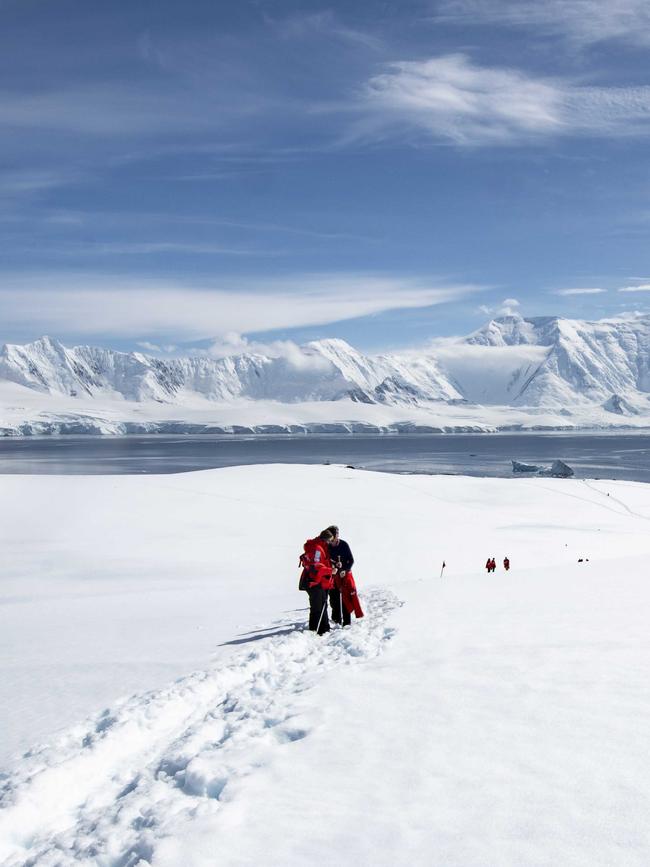
Antarctica is the highest, coldest, driest and windiest continent on Earth, a place of extreme weather and bone-shattering storms. But when I awoke on the third morning, the ship now at anchor in Lafond Bay, it was in a benign mood. Out on deck, I gazed at sensuous drifts of snow and ice, broken here and there by the hard edges of exposed black rock. Antarctica didn’t seem so much like a continent as a vast work of exquisite sculpture. Flotillas of icebergs filled the bay, majestic, castellated, tabular, an unearthly blue, their brows armoured with ice, their flanks polished and carved into abstract form. As dawn broke, delicate colour filtered into this monochrome scene, pink and orange and the most subtle rose, stealing across the icebergs one by one, and draping distant white provinces, the polar approximations of prairies and valleys and mountain ranges, with soft light. Nothing moved. The ice-bound continent was a study in light and shadow, a place of stillness and silences. That first morning in Antarctica felt like the world’s first morning.
Le Lyrial is one of Ponant’s intimately sized ships. Chartered by Abercrombie & Kent, she is part of a commercial empire of luxury brands that include the likes of Gucci, Yves Saint Laurent, Bottega Veneta and Christie’s, the auction house. Billed as an expedition ship, which means wet and dry shore landings from Zodiacs, she is small, with a maximum of 244 passengers, but feels big; A&K limits its voyages to 199 guests. With a soothing polar palette of blues and greys, she has all balcony suites and staterooms, and comes with all the usual trappings – a spa, a gym, a heated pool, a panoramic lounge, a photographic desk, a chap playing Chopin on a grand piano, a barman mixing the world’s best Margaritas, and an afternoon tea service that offers crêpes and delightful madeleines.
Ponant is French, and Le Lyrial is as sophisticated as a grand Right Bank hotel. There’s a welcome focus on great food and she carries one of the best wine cellars at sea. Le Céleste, on deck two, offers fine dining in a grand chandeliered space while up on deck six, La Comète has a less formal vibe with an outside seating area for sunny days in the polar south. But while Le Lyrial is sailed by French sailors, and the menus are overseen by French chefs, they have wisely left the hospitality to other nationalities. No one wants a Parisian waiter in Antarctica. If it is people that make places, it is the crew that makes this ship. From barmen to butlers, waiters to room staff, Le Lyrial sails with a splendid multinational crew whose extraordinary charm is what made us all fall in love with her. But the really key people aboard were A&K’s expedition team – naturalists, marine biologists, historians, geographers, photographers, ornithologists, hiking guides, even a poet. Every day there was a series of entertaining talks about everything Antarctic, from penguins to early explorers. And every day there were excursions ashore, usually both morning and afternoon. Kitted up in A&K’s complimentary parkas, we were ushered by the expedition crew into small groups and whisked ashore for polar adventures.
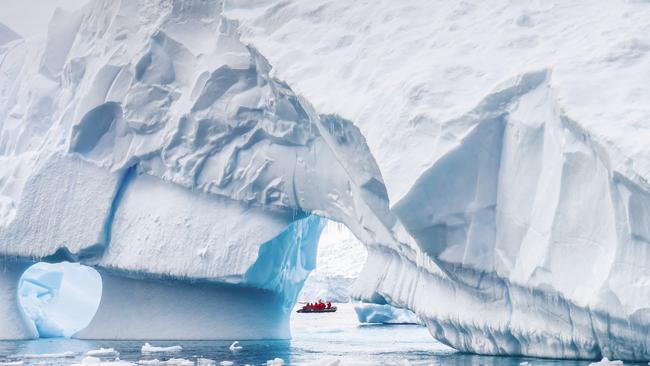
On Jenny Island, we met elephant seals the size and weight of pick-up trucks. Bundled together like puppies, farting contentedly, squabbling occasionally, they scratched their nether regions with flippers that had fingernails remarkably like our own. If they seemed to doing a lot of snoozing, it was hardly any wonder. Things would get hectic in mating season. Alpha males controlled extensive harems along a stretch of beach, shagging up to a hundred females on a rota basis while fending off the devious approaches of younger males intent on getting their share when the alpha’s back was turned.
Not far away, we watched Adélie penguins waddling up and down penguin “highways” between their nests and the shore-like commuters disembarking from suburban trains in identical suits. On a ridge a group all faced the same way, hunched against snowy blasts of wind, their shoulders mantled with snow. From time to time, they gagged and vomited into the waiting mouths of the little balls of fluff at their feet. Their nests were composed, a little haphazardly, of small rocks. The rocks were jealously guarded. When one set off for lunch, trotting down to the shore, its neighbour stood up, wandered over and stole a couple of its best rocks for its own nest. A colony of crab-eating seals, over a hundred strong, lounged on an iceberg like local toughs. On another, a single leopard seal opened its eyes and raised its terrible reptilian head as we passed, disappointed that we didn’t look like dinner. At the water’s edge, gangs of fur seals played in the surf like puppies. One day, coming home in the Zodiacs, a gentoo penguin passed us, leapfrogging in and out of the water as quick and streamlined as a missile. They might’ve waddled on land like overweight octogenarians, but at sea these curious creatures were astonishing swimmers.
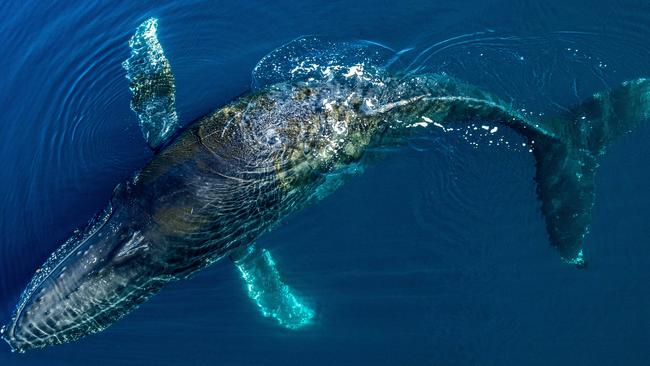
Whales were our constant companions. From the foredecks, we watched their plumes of spray rising like banners on the sea about us, their gunmetal backs rolling in the waves, fins flashing – minke and fin and southern right whales, orcas with the tall blade of their dorsal fins. In a bay in front of Peter Island one afternoon, we came upon a large pod of humpback whales. They rolled and spouted, so close to us we could smell the foul fishy stink of their breathy exhalations. They dove repeatedly into the comforting depths, their tails suspended aloft for that last lingering moment before they disappeared. Then a couple started to breach. The size of London buses, they threw themselves upwards, water streaming from their enormous flanks, before falling back with a great belly flop into the bay. No one knows why they do this – signalling dominance, cleaning themselves of parasites, communicating in some way, or just for fun, playful as children in a playground.
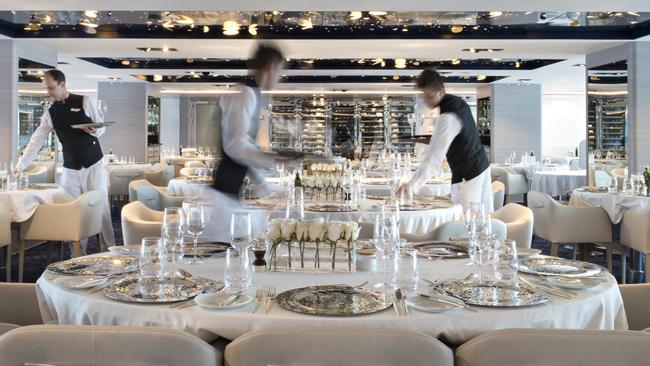
-
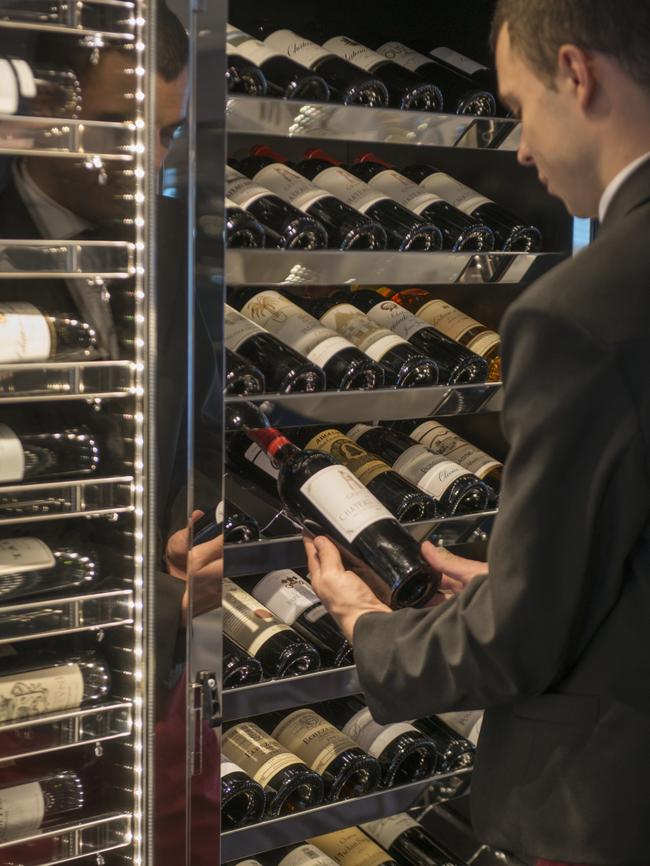

Our other companions were birds. White petrels swooped low over the polar waves while terns circled above. One day a pair of skuas appeared; the only bird to breed in Antarctica, they take the precaution of always laying two eggs so that one chick can be fed to the other in an environment that offers so few resources. One morning the ship was surrounded by albatrosses, sailing around us on wingspans over three metres, dark calligraphic figures against white skies.
But the most fascinating figures in this landscape – perhaps penguins aside – were those not there. In this white wasteland, we were all transfixed by the tales of explorers – Scott and Amundsen and the heroic Shackleton – who came here a century ago, men with frozen beards and thousand-yard stares, to see who could be the first to reach the pole, to cross the continent by dog sled, to lose their toes to frostbite. Like us, they were all in the grip of this captivating place. At Winter Island, in the Wilhelm Archipelago, we visited one of the huts of their successors, the base for a research team from the British Antarctic Survey, who came a generation later and stayed for months to dig holes in the ice, take temperatures and rock samples, and try not to get on each other’s nerves in the immense solitude. Atop a low ridge the hut looked too insubstantial for this dramatic place, as if the first winter storm would blow the whole thing away. It has been empty for 70 years.
It’s like a time capsule, strangely preserved in this dry climate. Books still stand on the shelves, tins of Ovaltine and sardines are still stacked in the storage pantries, old tools still scattered across the work benches, empty chairs still drawn round the pot-bellied stove. It’s as though the inhabitants had simply vanished into thin polar air. You might wonder what possessed these men to come here, to spend months in this remote isolation, at the end of the world. But we got it. Antarctica is worth a great deal of hardship. Of course, not that we knew much about hardship as we returned, a little sheepishly, to our elegant ship, where cocktails awaited us and dinner was just being served by a team of charming waiters. This was the best journey in the world.
For all the hardships, the author of The Worst Journey in the World was haunted by his time in the White South. His book, published in 1922, is seen as a masterpiece of travel literature; over a century on, it is still in print. Cherry-Garrard spent the rest of his life in thrall to his days here, to the continent’s challenges and beauty and magnificence. It was where he had felt most alive. We may not have dragged sleds over six-foot ice ridges, but all of us aboard Le Lyrial understood how he felt. Antarctica is the world’s most remarkable place. None of us would ever forget it.
The writer travelled as a guest of Abercrombie & Kent, which charters Ponant ships for its Luxury Expedition Cruises. In January 2026, A&K is hosting a 17-night Antarctica, South Georgia & Falklands Expedition from $39,790 per person. abercrombiekent.com.au



To join the conversation, please log in. Don't have an account? Register
Join the conversation, you are commenting as Logout